You see pictures and videos of happy people in Las Coloradas frolicking on the shores of a bright pink lake and you start dreaming of your next trip to Yucatán, Mexico. How cool would be a shot of yourself taking a dip in such a striking background.
Before you start rehearsing your pose there’s a thing or two you should know: all those pictures and videos are from a long-gone era, sorry to break your Instagram dream.
You can still visit the pink salt lakes of Mexico in Las Coloradas, but things have changed.
Read below to learn about the site, what you can and can’t do, what else is around, and if it’s worth the trip.
Disclosure: This post contains some affiliate links. If you make a purchase through those links I will earn a commission at no additional cost to you (zero, nada). To check the full disclaimer, click here.
Table of Contents
What Is Las Coloradas?
Las Coloradas (meaning “the red ones”) is the name of a small coastal town in the north of Yucatán where a sea salt harvesting facility operates.
It’s located inside the Ría Lagartos Biosphere Reserve, a UNESCO Biosphere Reserve and a designated Ramsar area, which means that any activity carried out here must not threaten the conservation of the wetlands and the rich diversity of flora and fauna inhabiting the area.
The salt on the rim of that margarita you’re having in Mexico may come from here as most of their production stays in the country.
Centuries ago, during pre-Columbian times Mayans came to this same spot to collect salt crystals after the sun evaporated pockets of seawater trapped in higher grounds, using it for food preservation and for commercial trading.
Not on an industrial scale, of course.
This is a big operation with man-made structures involved, which takes us to the next question.
Is Las Coloradas Natural?
Yes, and no.
The “lake” (cue the quotes) isn’t natural. These are man-made ponds holding sea water and the salt crystals left after the water evaporates. In short, it’s a commercial facility inside a natural park.
The pink colour of the water is natural. It’s a result of the process that takes place inside the ponds. More on that next.
Why Is Las Coloradas Pink?
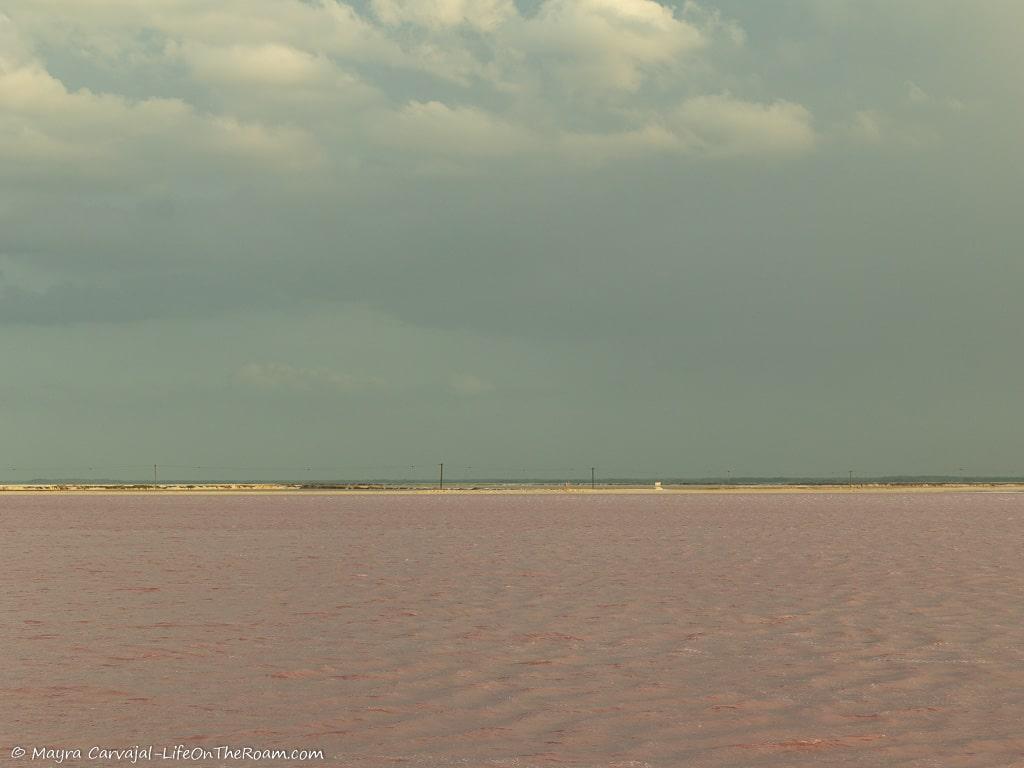
First, you must know that not every pond is pink all the time.
When selected ponds are first filled with sea water they look like any other pond.
Months go by, the sun does its evaporation job, and the water goes through different colours.
The saltier it gets the less living creatures can tolerate the environment. The designated survivor is a tiny crustacean (artemia salina), a three-eyed species of brine shrimp with a red pigment, to whom you can thank for the pink show.
You can thank them not only for the pink ponds but also for the pink flamingos. Their white feathers turn that colour because they love to feed on the tiny shrimp.
Can You Swim in Las Coloradas?
No, no, no.
But, but, but, what about all the pictures of people swimming there and sitting right next to the shore?
That’s from a time when Las Coloradas wasn’t on the radar and very few people came here. It was an open field where you could roam around on your own. Even then the ponds were not intended for swimming. These aren’t recreational lakes, they’re salt harvesting ponds. Remember, it’s a commercial facility. You don’t want any dead skin cells on your margaritas!
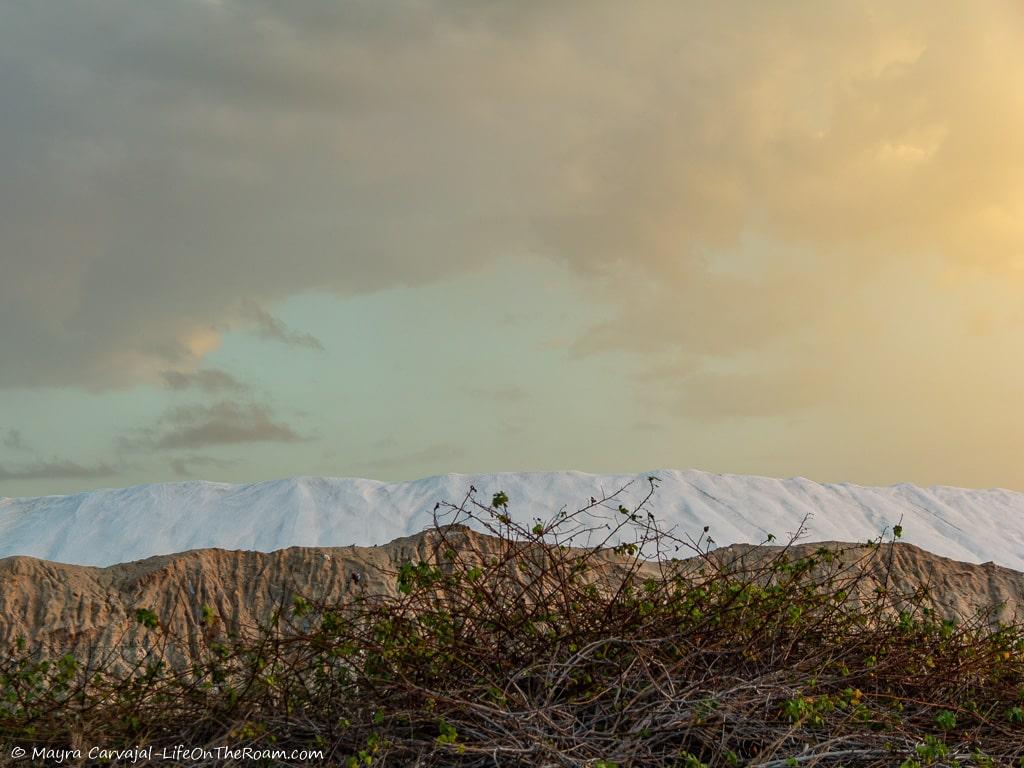
Not only can’t you swim, but you can’t be too close to the edge anymore or fly drones to take the fantastic aerial shots you see online.
There are plenty of people around making sure you don’t even think about it.
And don’t look around for pink “beaches”. There are none.
How to Visit Las Coloradas
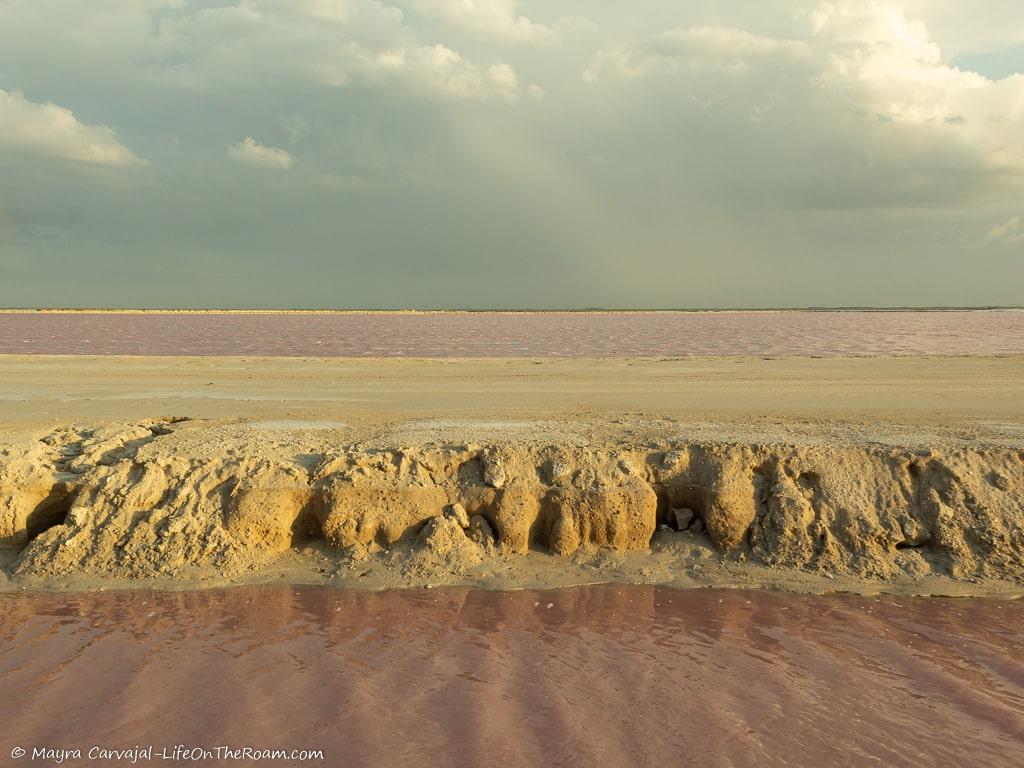
On Your Own
If you still want to come here after knowing about all the regulations, the most comfortable and easiest way is to rent a car and find a viewing spot on the road to snap your pic. You can see that moats have been built to prevent people from entering.
From the road, you can take a look at the ponds and the flamingos (bring binoculars) for free.
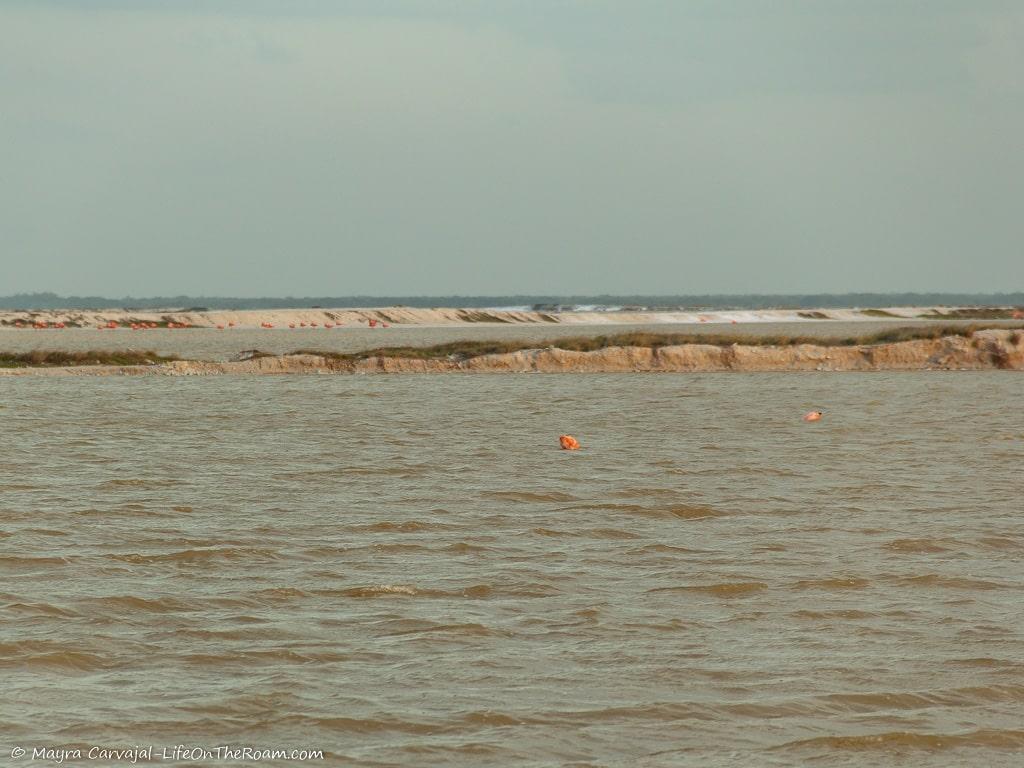
If you drive here, plan for an overnight stay and visit other attractions around the area to make the trip worth it. I give you a list with suggestions further down this post.
You can take a tour of the salt factory (named Las Coloradas Parque Turístico), which I think is waaay overpriced. Be aware that you still can’t get closer than two metres (6.5 feet) from the water.
Note: ignore the “guides” outside who will try to sway you into their “private tour”.
You can purchase a 45-minute walking tour around one pond for MXN$ 380 that includes an explanation of the salt process in English, or a bicycle tour (MXN$350 for 30 minutes/MXN$390 for 60 minutes), or board an open bus for MXN $690, to do a 90-minute tour with a longer explanation of the salt extraction process. If you want to go up the observation tower, there’ s an additional fee.
I think it’s on the expensive side. Keep in mind that this is a salt harvesting facility and beyond explaining the basic facts behind the operation and seeing the pink ponds (you may or may not see birds), there’s really not much to it.
The guide stays with you at all times to make sure you don’t do what you’re not supposed to do (getting too close to the water or even worse, going in the water). You can’t wander around. You can’t bring drones, tripods, or additional lenses or microphones for your camera.
Some people are shocked by the entry fee and just take a picture from the parking lot.
Good to know: bring sunscreen, a hat, and sunglasses as there’s no shade whatsoever.
With a Tour
Another alternative is to join a tour that visits different attractions in the area and that offers a stop in Las Coloradas. If you go for this, confirm if the entry fees are included or not to avoid surprises.
I don’t recommend taking a tour if you’re staying in Cancun or Tulum as the trip is ridiculously long and you’ll spend most of the time inside a vehicle. It works better if you’re staying in Merida or Valladolid.
Here are some highly-rated tours to Las Coloradas (combined with other attractions):
Tour to Las Coloradas, Playa Cancunito, and Rio Lagartos from Merida: it includes the tour inside the salt factory, a 45-minute stop at a virgin beach, a 2-hour boat tour in Rio Lagartos, and a meal at a restaurant.
Book this tour, with a rating of 4.9 based on more than 12 reviews.
Private tour of Las Coloradas, Cenote Suytun, and Rio Lagartos: you start with a swim in a cenote, a boat tour in Rio Lagartos, and end at Las Coloradas. Lunch and all entry fees are included.
Check the reviews of this tour, with a 5-star rating based on 25 reviews.
What Is the Best Time to Visit Las Coloradas?
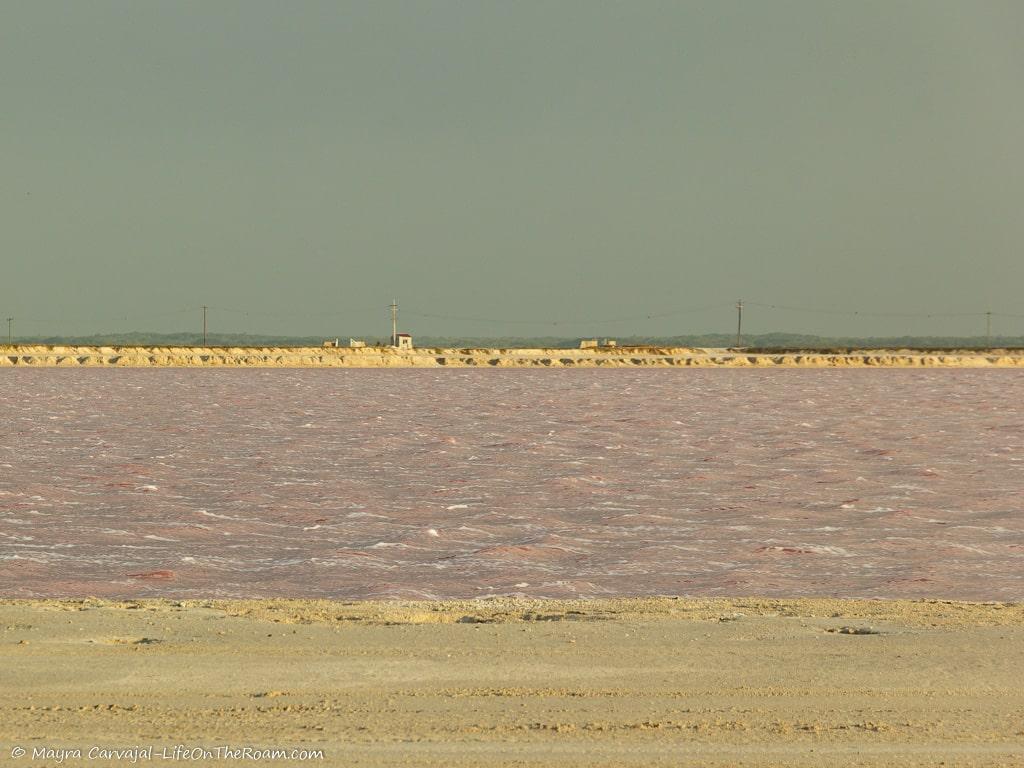
To see the ponds at their “pinkiest” be there on a sunny day between 11AM and 3PM.
As you can see from my pictures, it was cloudy when I was there and it was close to sunset. The colour may not be that intense, but it’s still beautiful. It was also windy so I didn’t get the mirror effect.
If you visit during hurricane season right after a storm, the pink will be on the dull side.
To see tons of flamingos (there can be up to 40,000!) schedule your visit during the breeding season which happens between April and June. You may see them up to the month of September. Keep in mind that you’ll see them from afar.
Is It Worth Visiting Las Coloradas?
In my opinion, only if it’s a stop on a trip to the town of Río Lagartos and other nearby attractions.
I think the admission fee to the salt factory is on the high side for a short walk or bike ride along one pond.
You may be out of luck and come all the way here only to find that the ponds next to the road may not look pink as they were filled up recently or right after the salt harvesting.
As for seeing flamingos, you can also see them from the road (at a distance), in Río Lagartos, and in other parts of Yucatán. You won’t get close to the flamingos inside the facility either.
If you’re staying only a few days in the Yucatán Peninsula this may be a long day trip. Too long.
Getting here from Cancún or Playa del Carmen is a 3.5-hour drive. Unless you can stay overnight in Río Lagartos or Valladolid (2 hours away), I don’t think it’s worth it, but you may think otherwise.
If the idea of coming here as part of a road trip sounds tempting further below you can read about some interesting spots.
How to Get to Las Coloradas
The best way to get here is by renting a car and making Las Coloradas a -short- stop in a two or three-day road trip.
There are ADO buses from Cancún or Playa del Carmen to Tizimín from where you must hop on another bus to Las Coloradas. The bus schedule to go back to Tizimín is limited so you have to make sure you don’t miss the ride. Otherwise, you’ll have to take a taxi (expensive).
I’m a fan of public transit but in this case, it’s too much trouble for just a 30-minute -way too expensive- visit to a man-made pond.
You can also take an organized tour, but for the freedom to design your own itinerary and go at a slower pace, it may be worth paying some more to rent a car.
What Else to Do on a Road Trip to Las Coloradas
The best way to visit Las Coloradas is to make it part of a 2 or 3-day road trip from Valladolid to Río Lagartos. It’s an easy drive along Federal Highway 295, with several points of interest.
See Wildlife and Stunning Sunsets in the Town of Río Lagartos
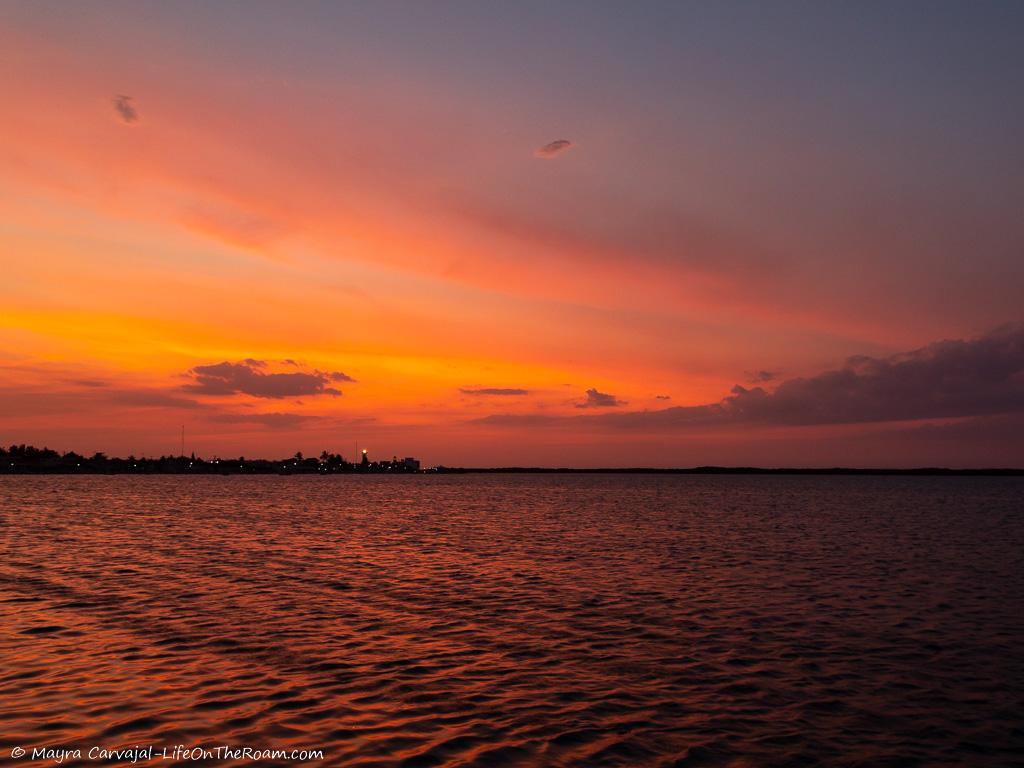
Río Lagartos is a seaside town located west of Las Coloradas, around 25 minutes away by car.
The town per se isn’t the most picturesque. The stars of the show are the spectacular sunsets (we stayed here overnight) and the wildlife you can see in the Ria Lagartos Biosphere Reserve, a 150,000 acres heaven for animals and plants.
Go on a kayak, paddleboard or take a boat tour for some snorkelling and birdwatching. There are more than 300 species of birds (resident and migratory), with plenty of flamingos. Or take a night tour and spot crocodiles.
The beach is a turtle nesting area so if you go at the right time you may be in for a treat.
Or you can do a boat trip from here to Holbox Island to enjoy paradisiac beaches and birdwatching (including flamingos).
Visit 16th and 18th-century Churches Along the Road
On the road, you’ll hit several small towns with churches going as far as the 16th century. The exteriors are on the simple side, but still lovely (and old!). We found these along the way (going northbound).
The Church of the Inmaculate Conception (Templo de la Inmaculada Concepción) in Calotmul.
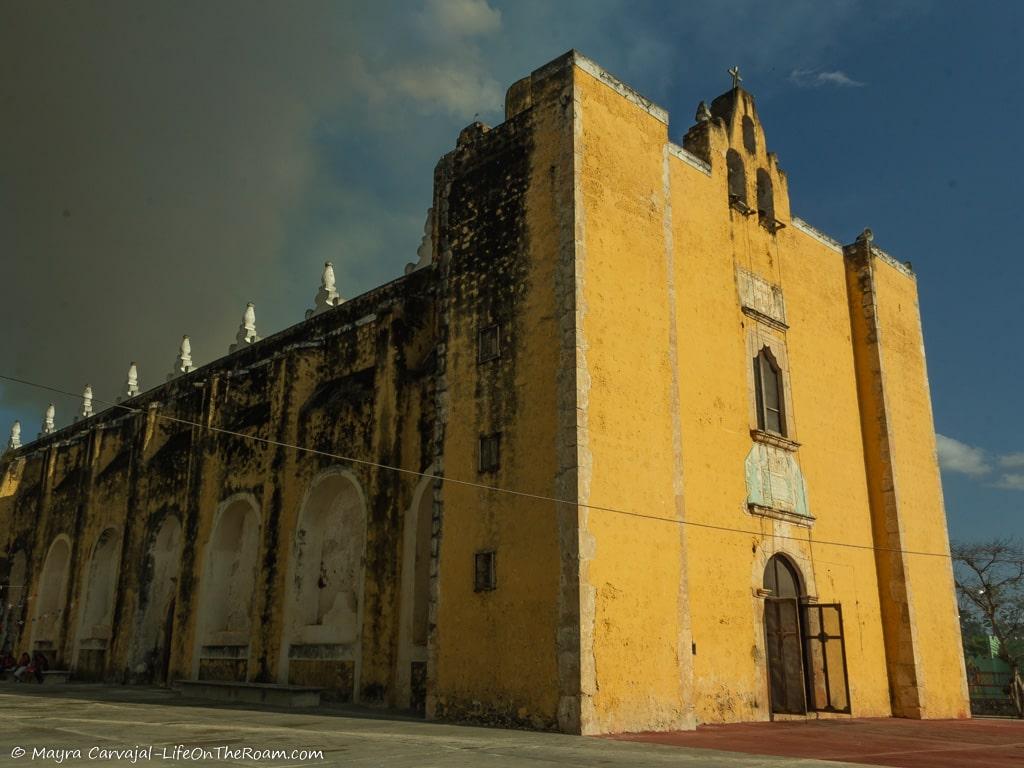
Calotmul (“Place of the two joined hills” in Mayan) is a tiny village that became an important religious and economic centre in colonial times. Here you can see the Church of the Immaculate Conception, built in 1749. Inside you’ll see a Baroque-style altar with niches.
The Sanctuary of the Three Wise Men (Santuario de Los Santos Reyes) in Tizimín
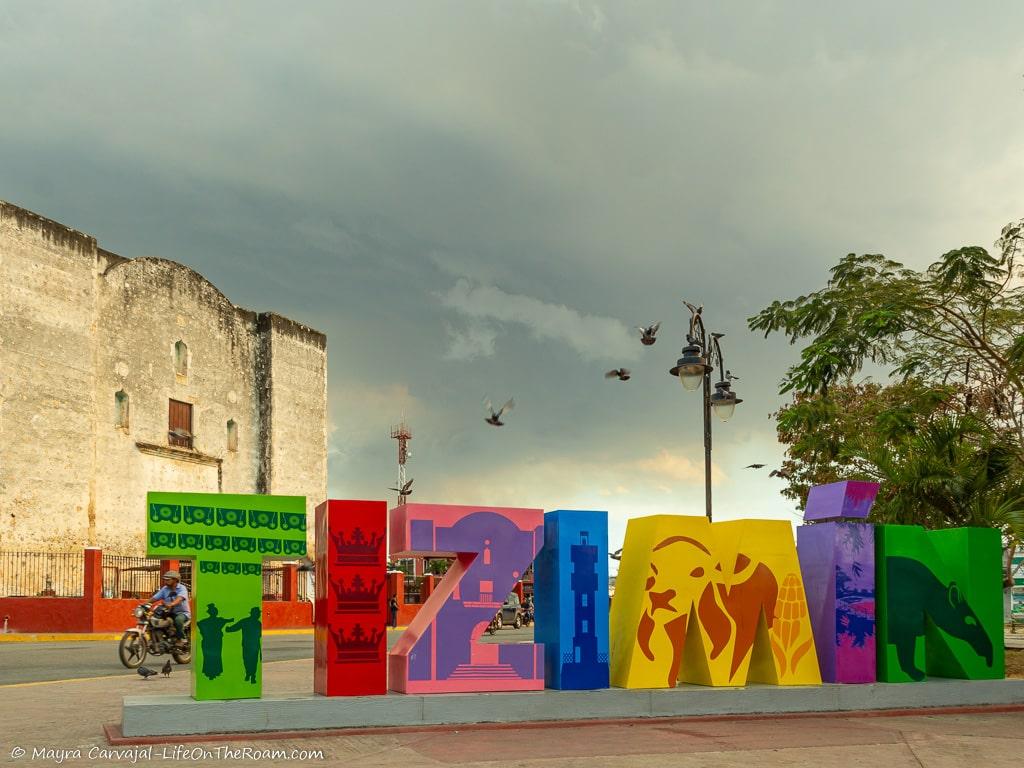
The Sanctuary of the Three Wise Men was built in 1563 in Renaissance style, and it’s dedicated to the magi.
The Franciscan Ex-Convent in Kikil
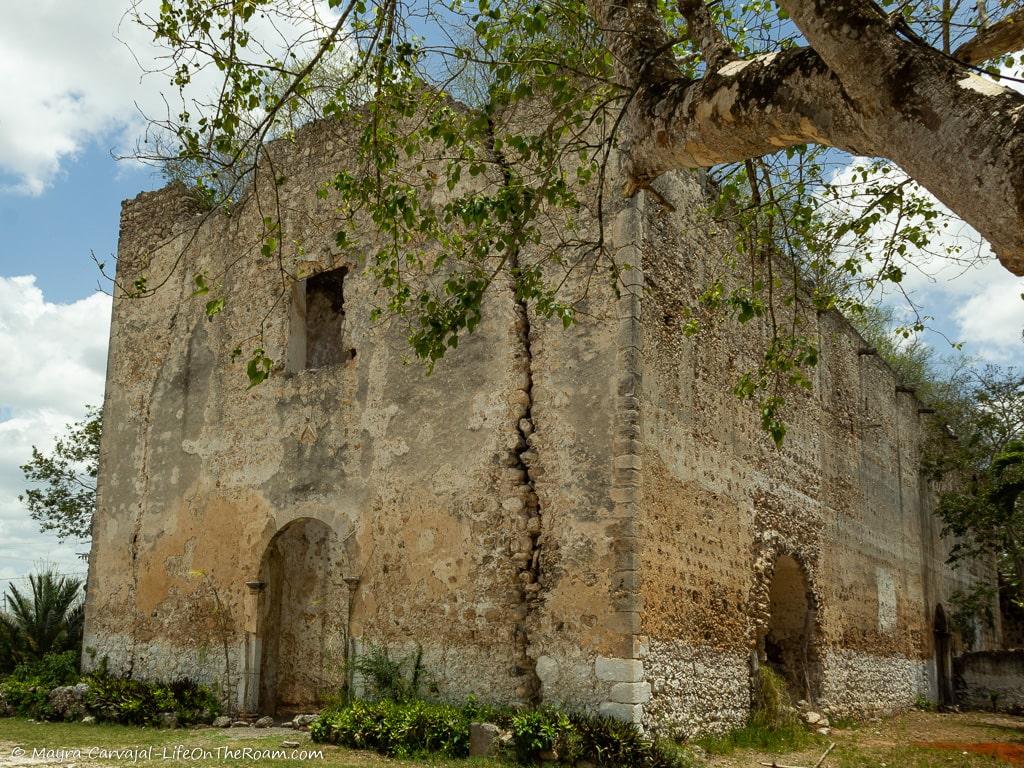
This old structure used to be a Franciscan convent. I love taking pictures of abandoned buildings, they’re like survivors. I can hear the stones saying Centuries have passed, people have come and gone and although nearly crumbling, I’m still here!.
Explore the Mayan Ruins of Ek Balam
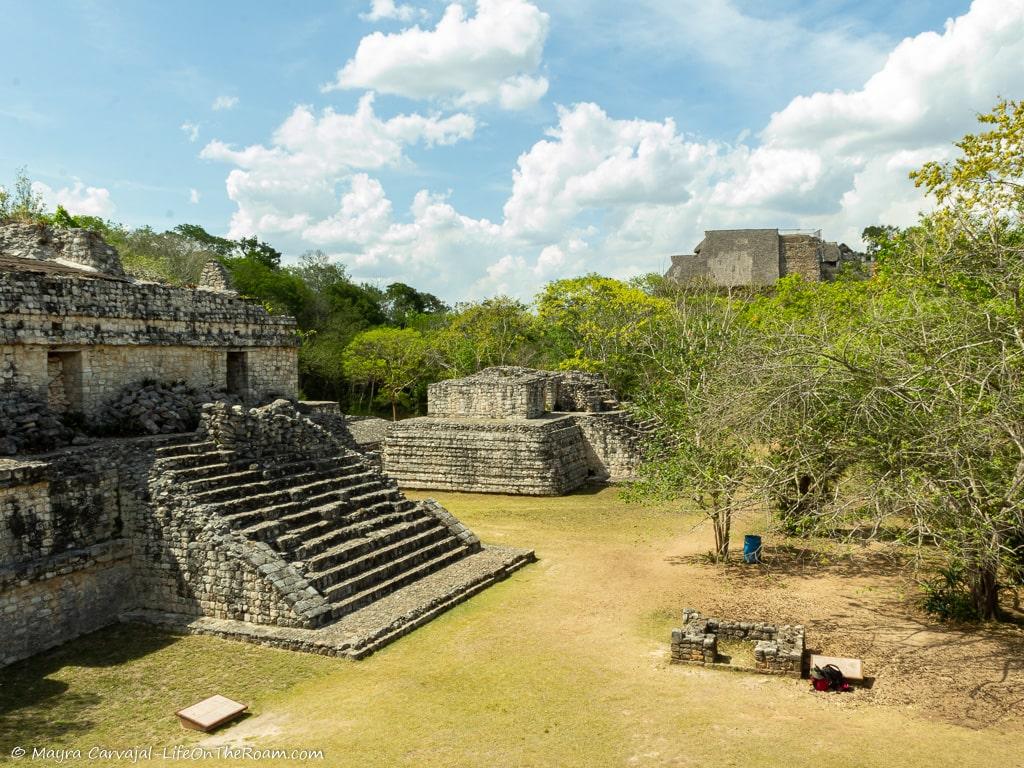
The archaeological site of Ek’ Balam is a 1.5-hour drive south of Las Coloradas and it’s a perfect addition to experience a little bit of everything in your road trip: beaches, wildlife, history, cenotes and pyramids.
It’s a medium-sized site where you can spend around two hours seeing distinctive features that are hard to find anywhere else.
Want to know what makes it unique? Read my blog post about Ek Balam.
If you have more time to spare and you want to beat Yucatán’s intense heat you can take a plunge in the cenote (sinkholes filled with underground water) on site.
Walk Among the Colonial Buildings of Valladolid
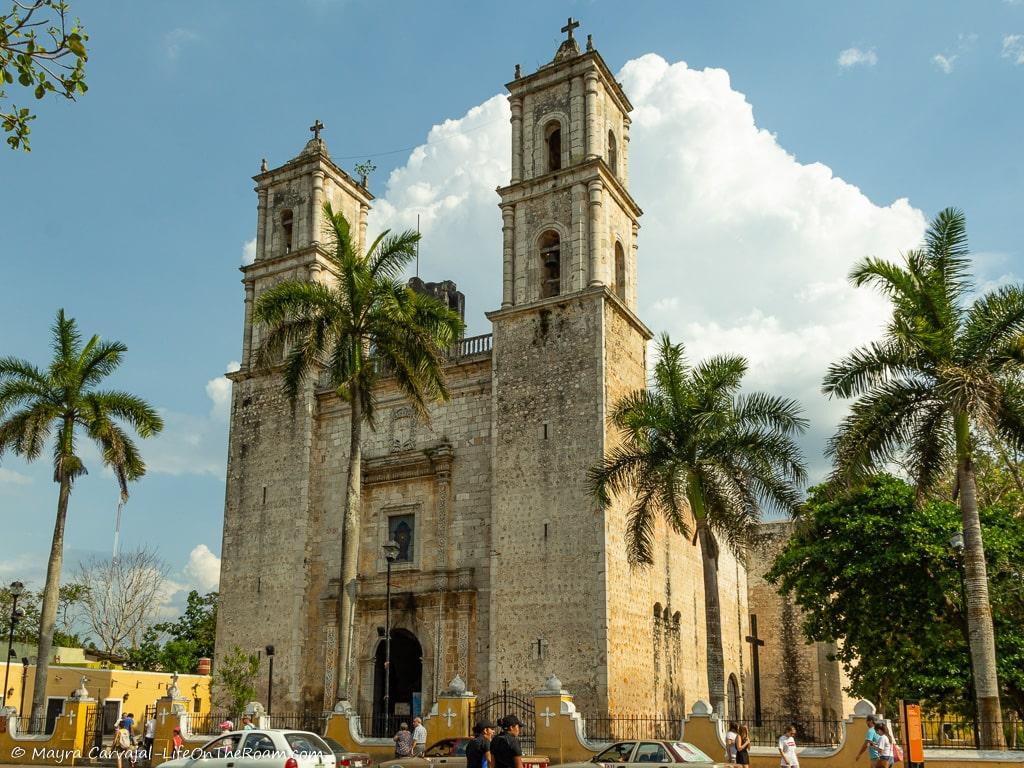
The streets of the small city of Valladolid are filled with colourful colonial buildings that will make your walk around town a delight.
Old convents, churches, and lovely squares made it a great spot for another overnight stay.
Valladolid is also a good place to stay if you’re planning to visit Chichen Itzá. It’s the closest largest city around the archaeological site (around a one-hour drive), meaning you can beat the hordes coming from Cancún and Playa del Carmen.
As there’s never a shortage of cenotes in Yucatán, only three blocks away from the main square you can swim in crystal clear waters under the roof of the semi-collapsed cavern of Cenote Zací.
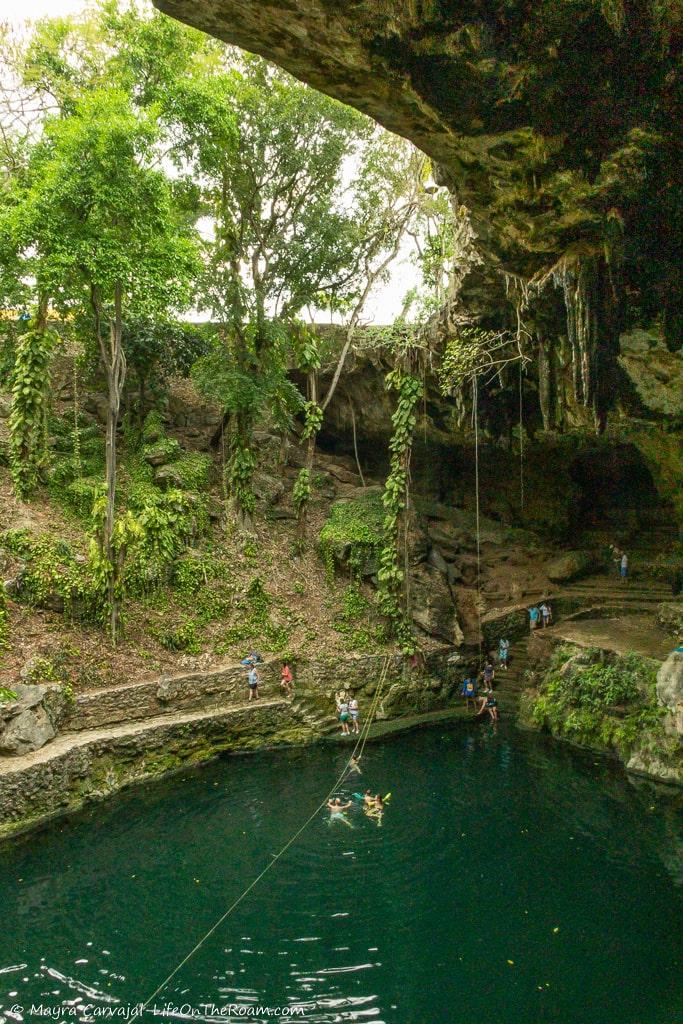
Las Coloradas is one of the off-the-beaten-path destinations in Yucatán that has gained popularity in the last few years. After seeing pictures of the striking colours and surrounding wildlife visitors decide to make the long trip, with mixed reviews.
I hope this post helps you decide if it’s worth it and what else to do around if you want to do it as part of a road trip.
RELATED POSTS
BOOKING FLIGHTS AND ACCOMMODATIONS
Book your flight without losing your shirt
We check Momondo to find great deals to book our flights. Also, check Great Escape: it combines the listings from Expedia, Kiwi, Kayak, (and Skyscanner on the premium service) to find the best airfares.
To find a place to stay for less
Booking.com: this site combines everything under the sun. You’ll find hotels, apartments, B&B, hostels, rooms, etc., with all sort of filters to make your search a breeze.
Hotwire: the first site I check when we plan to stay at a hotel for a few nights. You can save anything from 20% to 60%. Use the search filter to find what you want and you’ll end up with three listings that match your criteria. You’ll know which one you’ll get after you book. If you can handle a little bit of uncertainty you can score big savings.
House Sitting: you take care of people’s pets and house for free while staying for free. It’s the closest thing to experiencing a place “like a local”. But it comes with responsibilities… Are you an animal lover? It may become your new way to travel.
To get travel insurance
SafetyWing: travel medical insurance that gives us peace of mind knowing that we’re covered in case of emergency. It’s convenient, affordable, and suitable for digital nomads who spend a long time outside their home country.
Check the full list of travel resources on my Resource Page for more options and savings
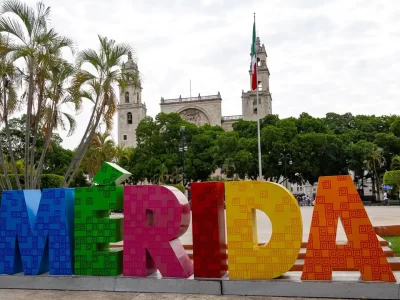
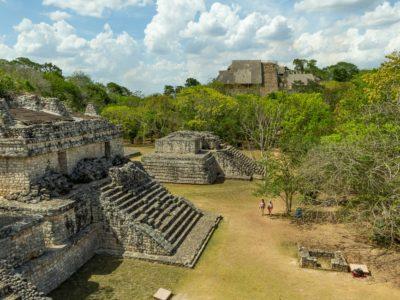
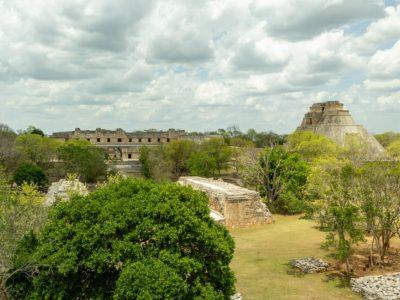
Thank you for your candidness and incredible information! There are pink lagoons in Puerto Rico too, at Bahía Salinas! These places are amazing if you get the chance to see them! Makes me want to travel!
Thanks for reading!
I had no idea about the pink lagoons in Puerto Rico. I have to add that to my bucket list!
what a great post, I might have to adjust my itinary when going there!
It makes for a great road trip. You may even include a visit to Chichen Itzá!
How beautiful! I enjoyed reading and learning about the pink lakes! Wonderful pictures.
If you go there on a sunny day you can take even better pictures as the pink will be brighter.
I honestly did not know these details about Las Coloradas! Thank you.
Interesting what a tiny three-eyed shrimp can do!
Another place to add to my bucket list. Thank you very much!
Thanks for reading! Mexico is a never-ending source for the bucket list.
I had no idea these existed! I appreciate your thorough and honest evaluation. And the beautiful photos as well!
I wanted to let know people what to expect. You may get better pictures if you’re luckier than me and get there on a sunny day.
Great post I have never heard of the Pink Lakes of Mexico before. I learnt a lot and really enjoyed reading your honest and informative article..
The colours are out of this world!